The Clean Scene
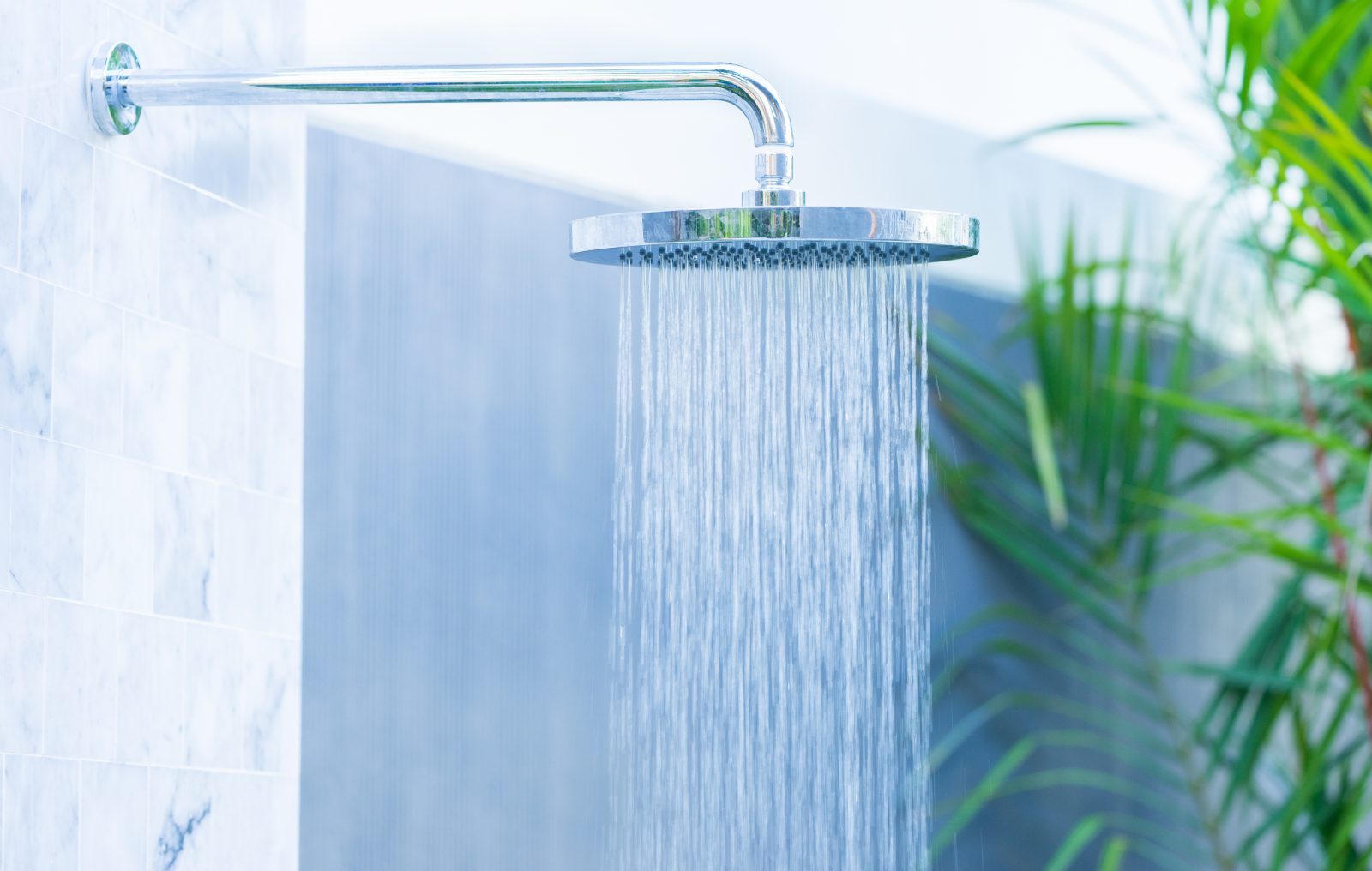
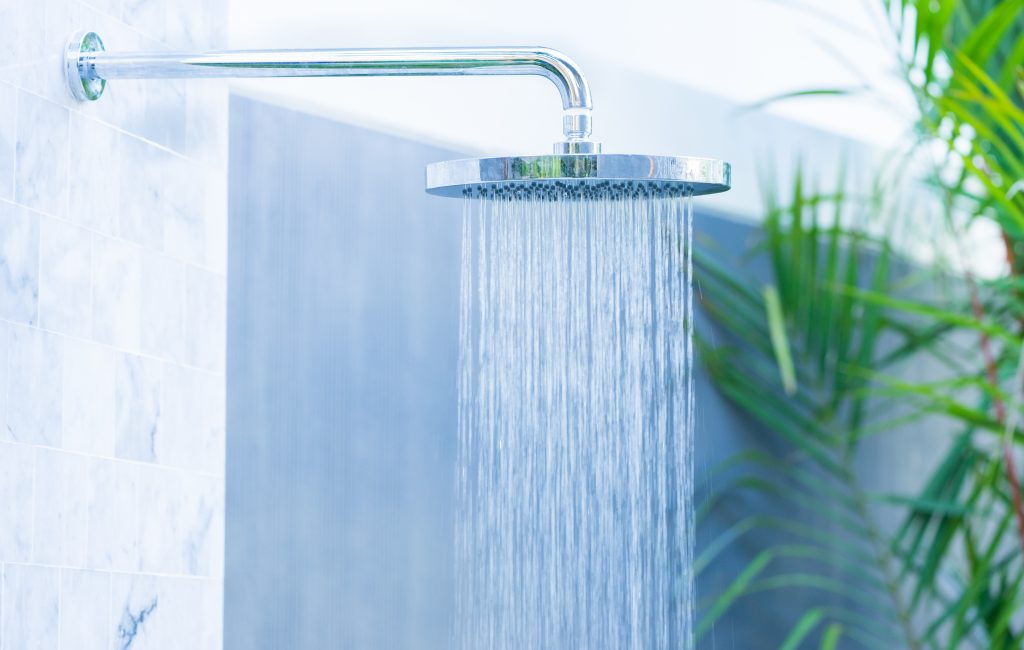
The benefits and importance of bather cleanliness are well established. From managing water quality to preventing the spread of waterborne diseases, showering stands as one of the frontline swimmer-health measures. As Paolo Benedetti points out here, showers also represent an opportunity to add value to the watershape environment with interesting designs, materials and by enhancing the experience of getting wet.
By Paolo Benedetti
For a long time, I’ve thought that showers associated with pool areas are all-too-often ignored, or at least given little thought or attention as part of the overall watershaping design scheme. I haven’t seen it covered in the trade press or even all that much about it in mega online resources such as Houzz or Dwell.
That surprises me given that fact a vast majority of commercial pool facilities include some type of shower facility, as do many residential projects. Sometimes the showers are outdoors, in other settings they’re located in pool houses or other outbuildings. Some provide hot water, others only cold.
To my mind, shower facilities fall roughly in the same category as outdoor kitchens, shade structures or dining areas. They are part of the landscape that surrounds pools and spas. For some clients, the shower is, in fact, something they care about because bathing is such an integral part of their daily lives and it only makes sense to factor the importance of showering before and after being in the water into the design and budget. Some clients have given it virtually not thought at all, others fall somewhere between.
OUNCES OF PREVENTION
From a hygienic standpoint, and indeed a water-quality management perspective, you cannot overstate the importance of bather cleanliness. Public health authorities have for decades urged showering before entering commercial pools and/or spas, and those admonitions have found their way into many local heath codes.
The CDC recommends showering with soap as a way to prevent transmission of waterborne diseases.
The reasons are abundantly clear and really just a matter of commonsense. Showering helps removes dirt, perspiration, body oils, cosmetics, suntan lotion, and even traces of urine and fecal matter from the body. When sharing water with others, it becomes a matter of common courtesy and consideration for others’ health and our own.
It boils down to basic water chemistry. When you wash away all those compounds before entering the water, there’s less burden on the chemical treatment system. When chlorine combines with organic compounds, many introduced by human immersion, that process generates disinfection byproducts (DBPs), such as the familiar trichloramine, which is what causes the familiar chlorine smell, as well as eye and skin irritation.
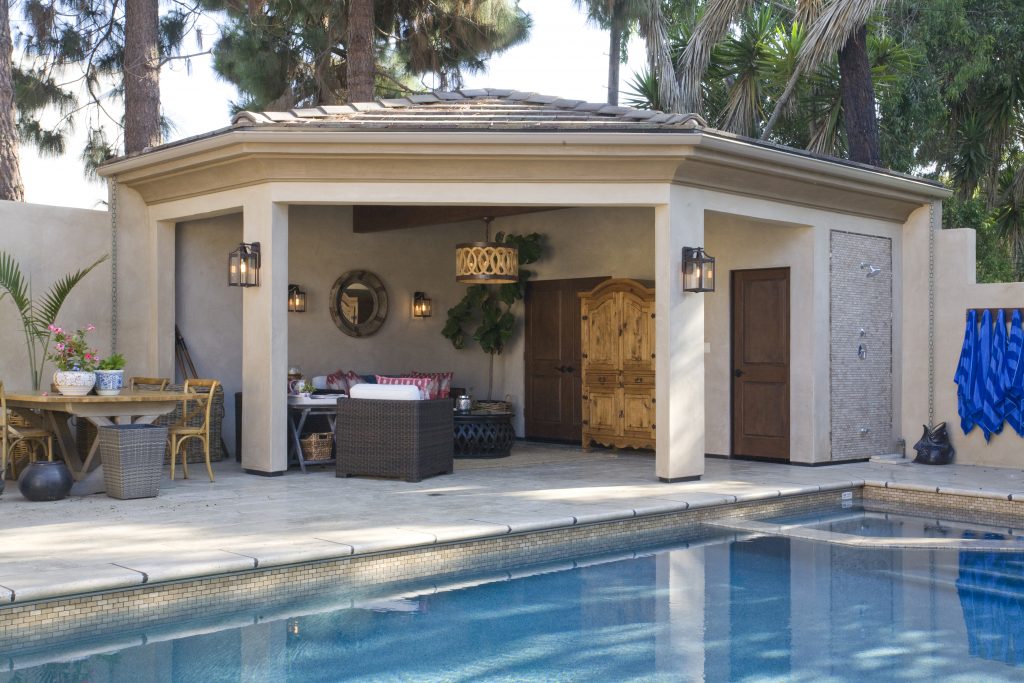
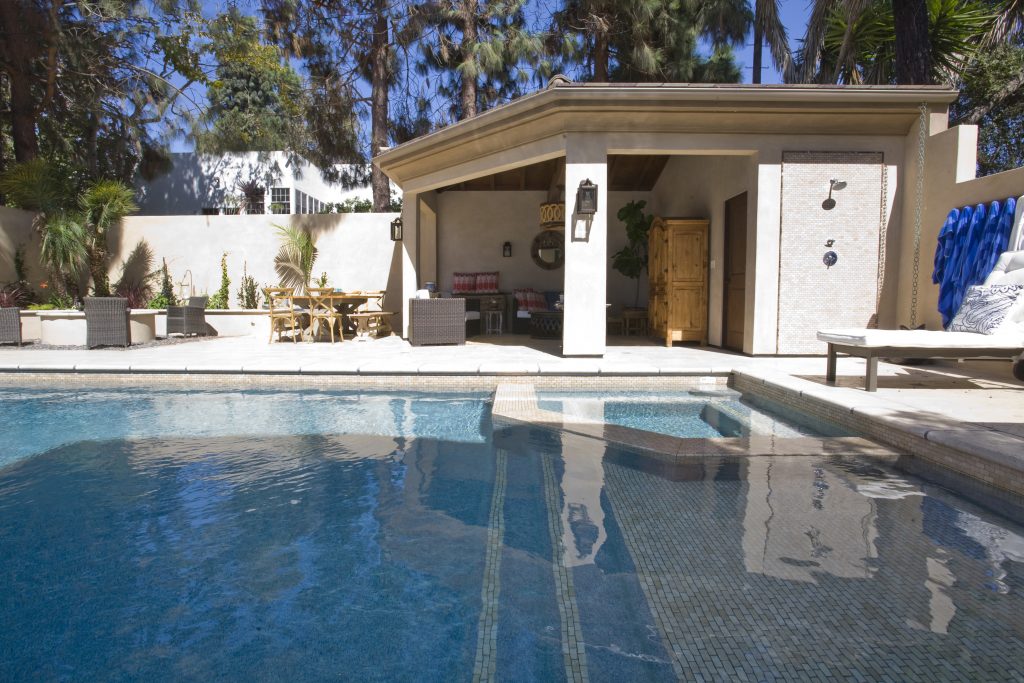
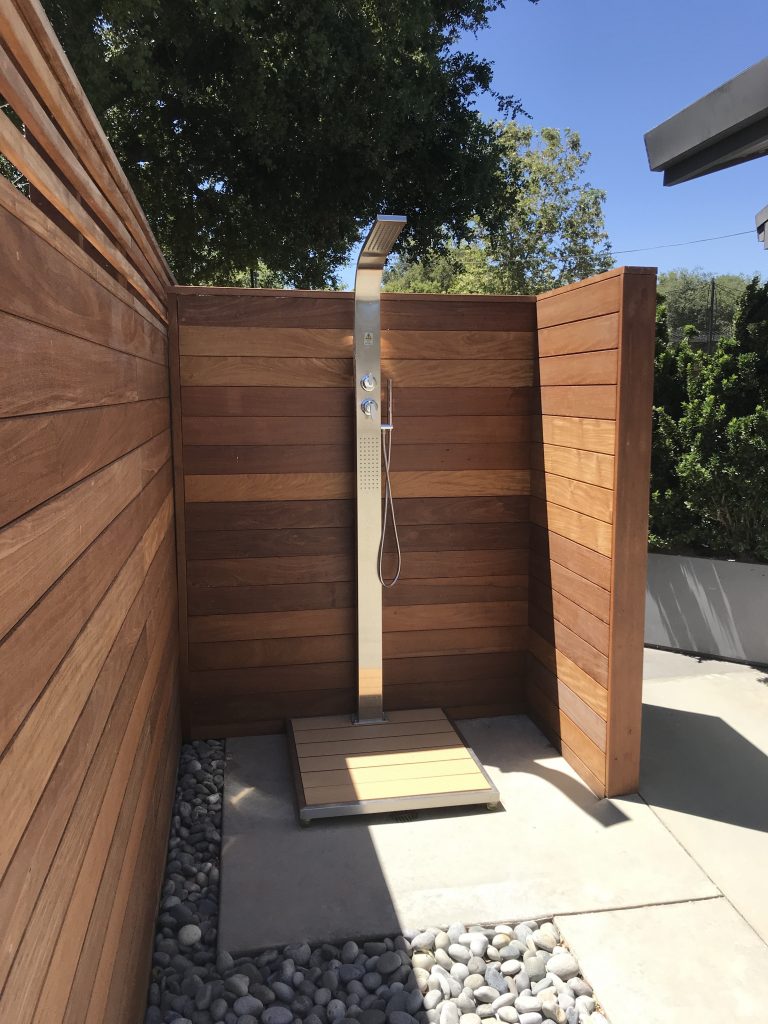
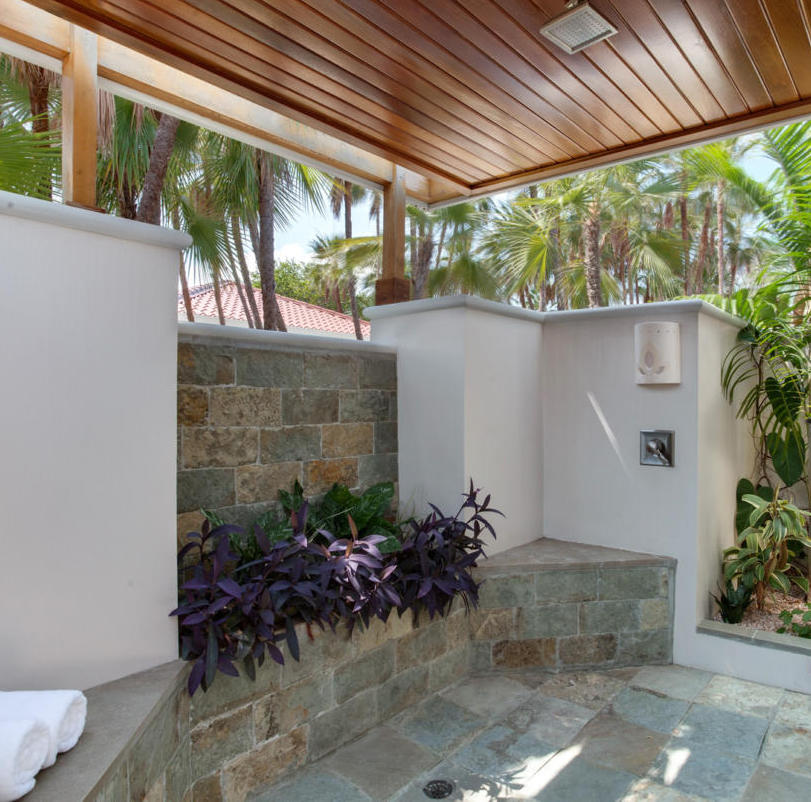
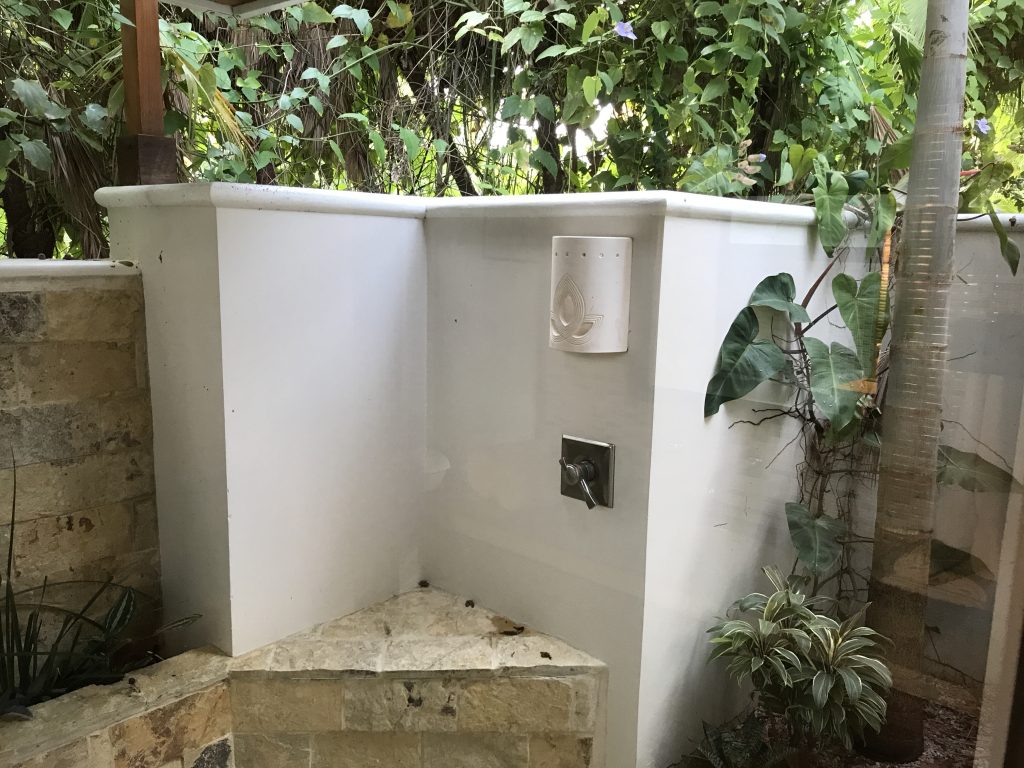
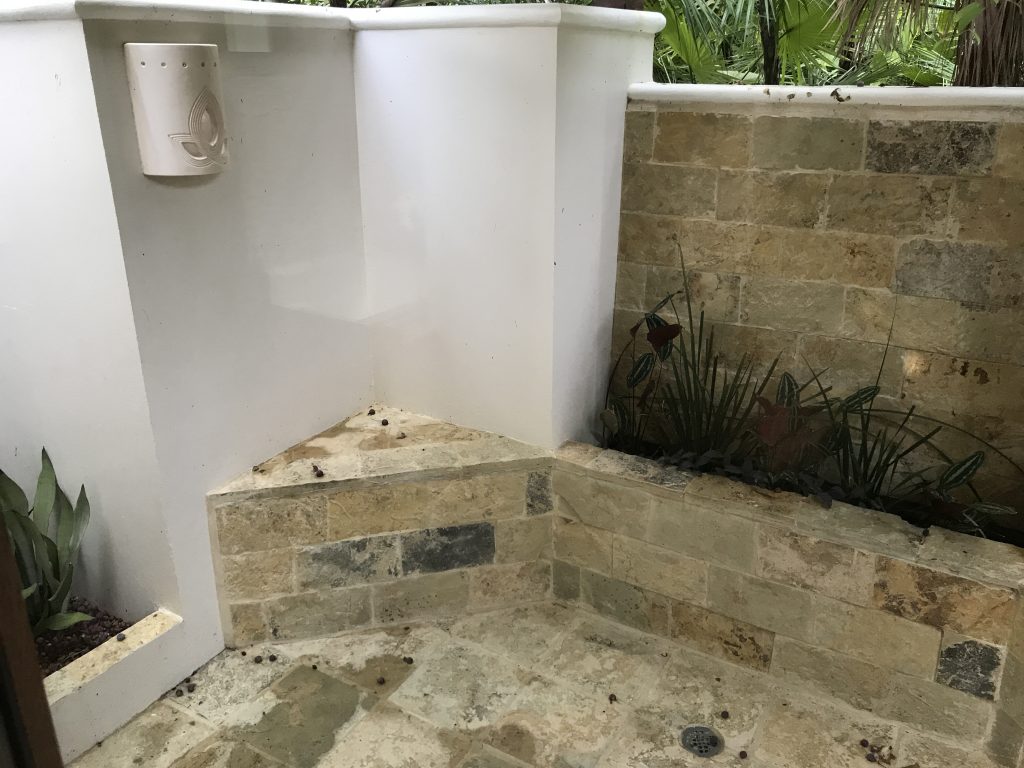
Once those contaminants are in the water, sanitizers and oxidizers, be it chlorine, bromine, ozone or AOP, are the only line of defense, and they take time to work, leaving the door open to possible exposure to pathogens and elevated levels of DBPs.
In this way, clean bodies help reduce maintenance costs and work to promote clean, clear and odor-free water conditions. Swimming becomes more enjoyable with reduced risk of getting sick. While that basic principle is extremely important in commercial settings where large numbers of people use the water every day, the same benefits apply in private pools. If the icky stuff doesn’t get in the water in the first place, the problems and risks that go come with unwashed bodies are dramatically reduced.
On top of all that, there’s a major psychological component involved. Many people find something beautifully indulgent and even sensual about bathing outside especially those with hot water and shower areas that provide some level of privacy.
At the very least, it’s a topic worth exploring with clients who are looking for the complete watershaping experience.
POOLSIDE MEASURES
Given all that, it only stands to reason that placing showers near pools serves to facilitate and encourage the all-important rinsing habit. When people have to rinse off in a shower inside the house, the odds of them doing so are going to be greatly reduced. Most of us are, after all, creatures of habit and convenience.
Including a shower can be as simple as locating a cold-water, off-the-shelf shower fixture somewhere in the pool area, or as elaborate as a complete outside bathing area with quality materials, fixtures, lighting and landscaping. There are many brands and suppliers on the market at a range of price points that can easily fit into any watershape design and budget.
Basic considerations include, but certainly not limited to the location, size, color palette, surface materials (tile, stone, concrete or wood), privacy, entry/egress and traffic patterns, overall aesthetic design, and, perhaps the biggest question of all, does the shower include hot water? (More on that below.) As is true of every other watershaping element, showers offer an opportunity to harmonize with the surroundings.
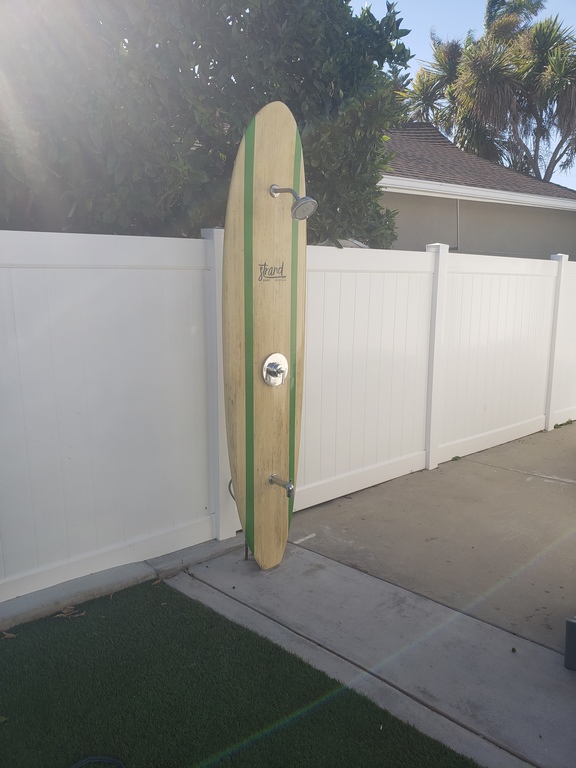
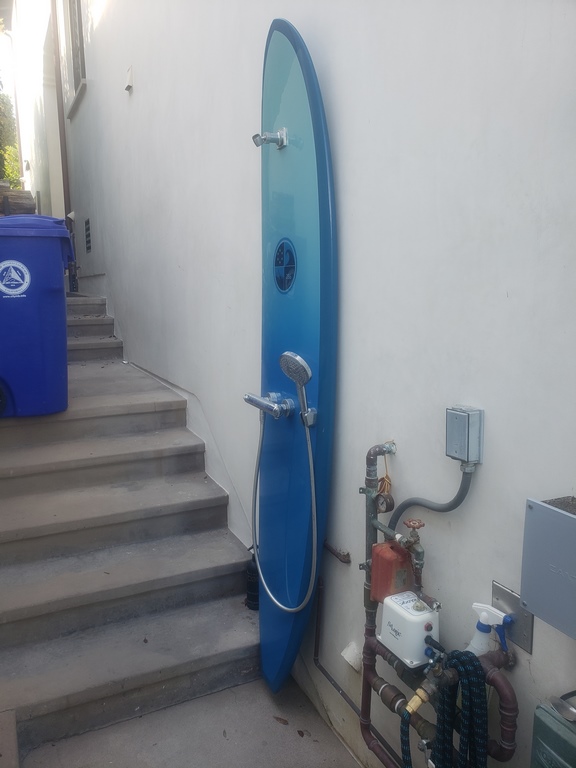
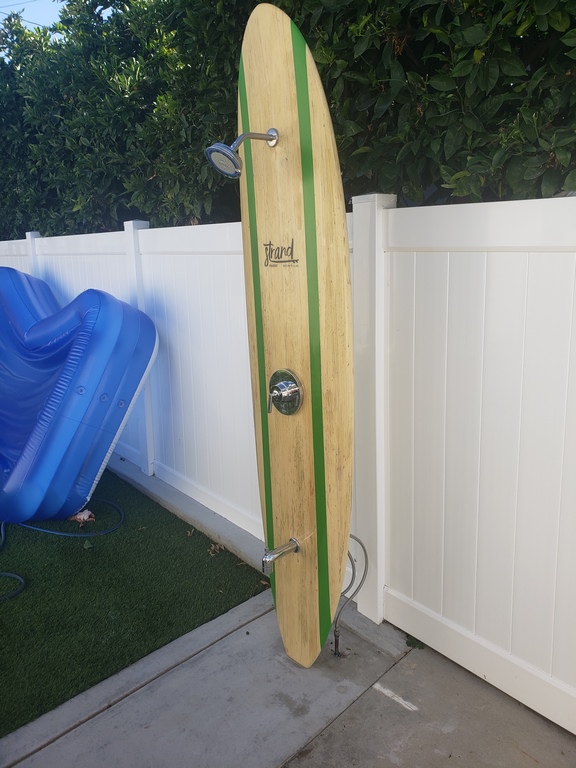
In terms of style, you can go in any direction whether it’s tropical, rustic, classic, contemporary, or any other design mode. As you can see in some of the photos, showers can take on a playful aspect, such as those using surfboards in the design.
I’ve also found that the right combination of details and features can hook clients. I was recently working on a super-high-end project in Cabo San Lucas, Mexico where the clients told me that one of their concerns with a shower was simply where to place all the different products used by their family, and especially their teenage daughter.
I suggested that we build a large drawer with drainage beneath a bench we had already decided to include in the shower design. That way there’s no clutter, but all the requisite bathing products are always at hand. They thought it was a brilliant idea.
On the same project, we included a foot wash because the property is on the beach. The foot wash will help prevent sand being tracked all over the property, into the pool or into the house, another practical idea that appealed to the clients.
As is true of all aspects of watershape design, the more you communicate with clients and actively listen to what they want and need, the better able you’ll be to make sure they wind up with a shower that they’ll enjoy. In some cases, the shower almost inadvertently becomes a point of pride. And for some, as mentioned above, part of that fun can be the indulgence of bathing outdoors.
COLD & HOT
The decision to include hot water with an outdoor shower, or not, is a major one.
Fact is, with few exceptions, people dread the idea of cold showers. It therefore stands to reason that cold-only showers are much, much less likely to be used regularly, which defeats the purpose of including a shower in the first place.
On the other hand, running hot water to the shower from the home’s hot-water heater can be tremendously expensive, depending on how far you have to run the plumbing, plus it can be inefficient, puts more burden on the hot-water heater and it can take a long time for the warm water to reach the shower, thus wasting water and causing the user to wait.
All of this is why I’ve started using tankless water-heating systems in conjunction with outdoor showers. There are many advantages: they are not prohibitively expensive, can be located anywhere, including right by the shower, they can be used to not only heat the shower water, but also provide hot water to an outdoor kitchen area, they deliver hot water very quickly and are designed for energy efficiency.
These days, when I suggest the tankless heater option, many homeowners enthusiastically approve the idea and we move forward.
By providing hot water, the outdoor shower goes from being a kind of intimidating idea, to something many people cannot wait to indulge.
Some clients have even told me that showering outside has replaced indoor bathing, just because they love the feeling of being in the open air and in the beautiful surroundings when they bathe.
HIGHER CALLING
There’s another aspect to bather “cleanliness” and watershaping worth considering, the use of water in religious rituals. While that might seem an unusual way to look at it, fact is, bathing and the concept of spiritual absolution are as old as human civilization and organized religious belief. For many, water and faith go hand in hand, myself among them.
A few years ago, I completely redesigned and renovated a baptismal font at St. Benedict’s Catholic Church, where I attend services in Hollister, Calif. The original font was an aluminum bowl that had corroded and fallen into disrepair. Numerous ADA issues on surrounding steps, unbonded hand rails and leaking water onto the surrounding floor necessitated a rebuild.
My son, Tyler, and I, with the help of a few parishioners stripped the old finishes and waterproofing, built the cube out of concrete and steel, installed the new mortar beds and waterproofing, and set tiles.
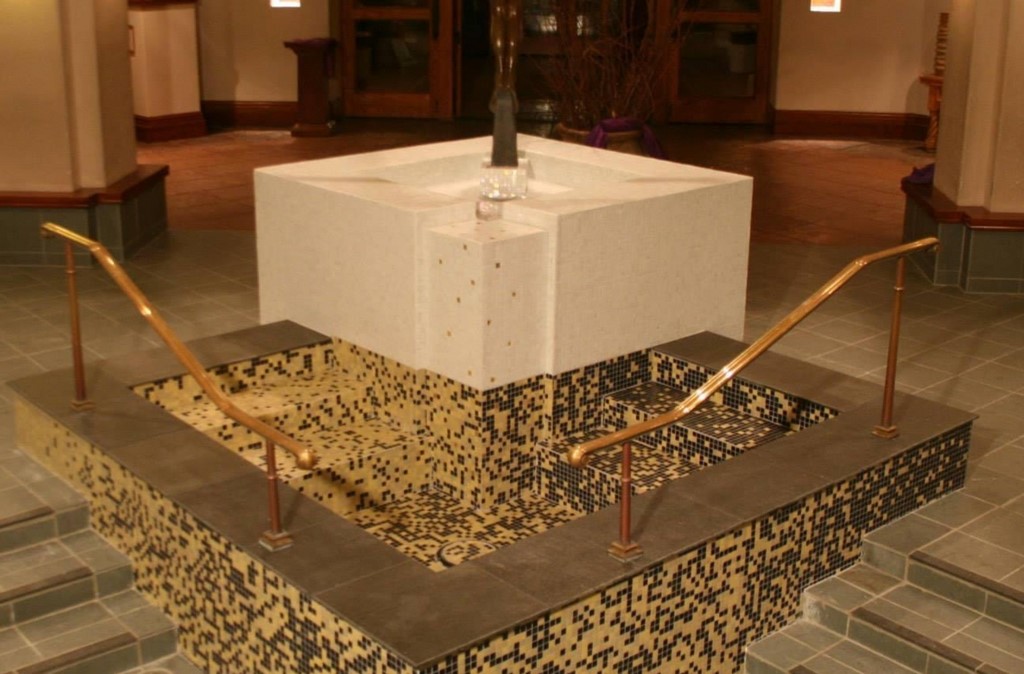
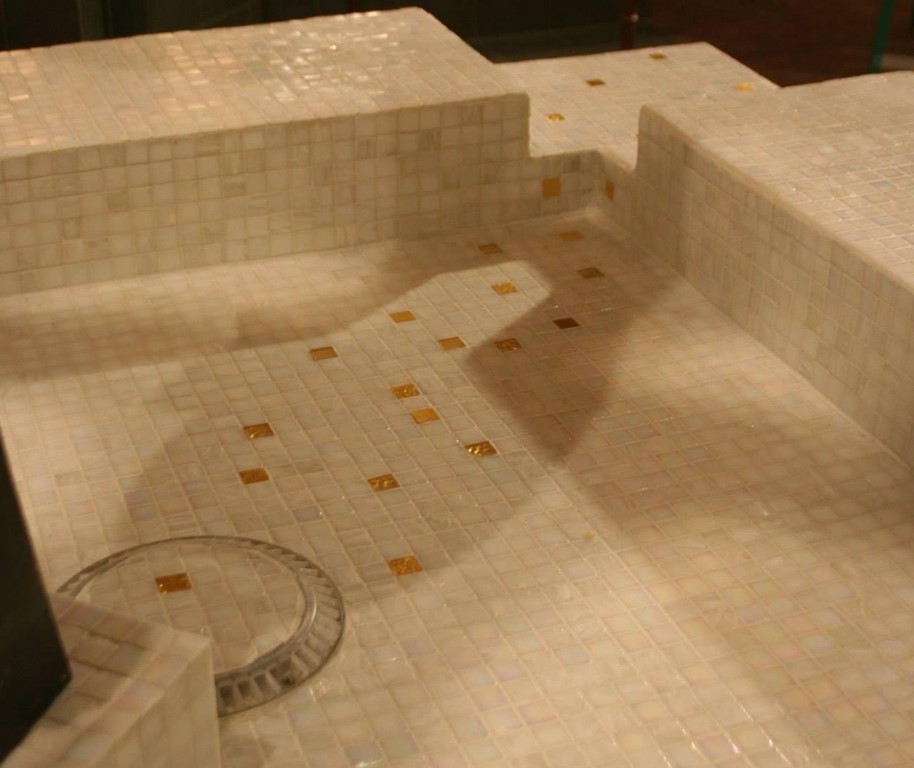

The wide rim on the upper cube eases baptizing squirming infants by way of a wide shelf to lay them on and plenty of space for family to gather.
A bronze statue of Christ dominates the font, gazing upward through a skylight, as if looking toward heaven.
A gradient blend of glass tile mosaics offers a visual allegory, moving from grays and blacks, representing sin, moving into white and yellows signifying purification. The blacks and grays dominate the steps moving into the font, while the exit is all white and gold on the exiting steps.
The hand railings were relocated to the top of the font to increase safety and to discourage sitting along the edge of the font and possibly using it like a shallow pool. We used flamed black granite to offset and highly the tile mosaic. We also widened a spillway to reduce water flow and reduce the trickling sound.
Paolo Benedetti founded Aquatic Technology in 1993. He is an instructor for Watershape University and and has authored a myriad of articles on the finer points of pool construction and design. He is a pioneer in the field of aquatic design, constantly pushing the envelope, creating a number of firsts that spawned new trends in the industry.










